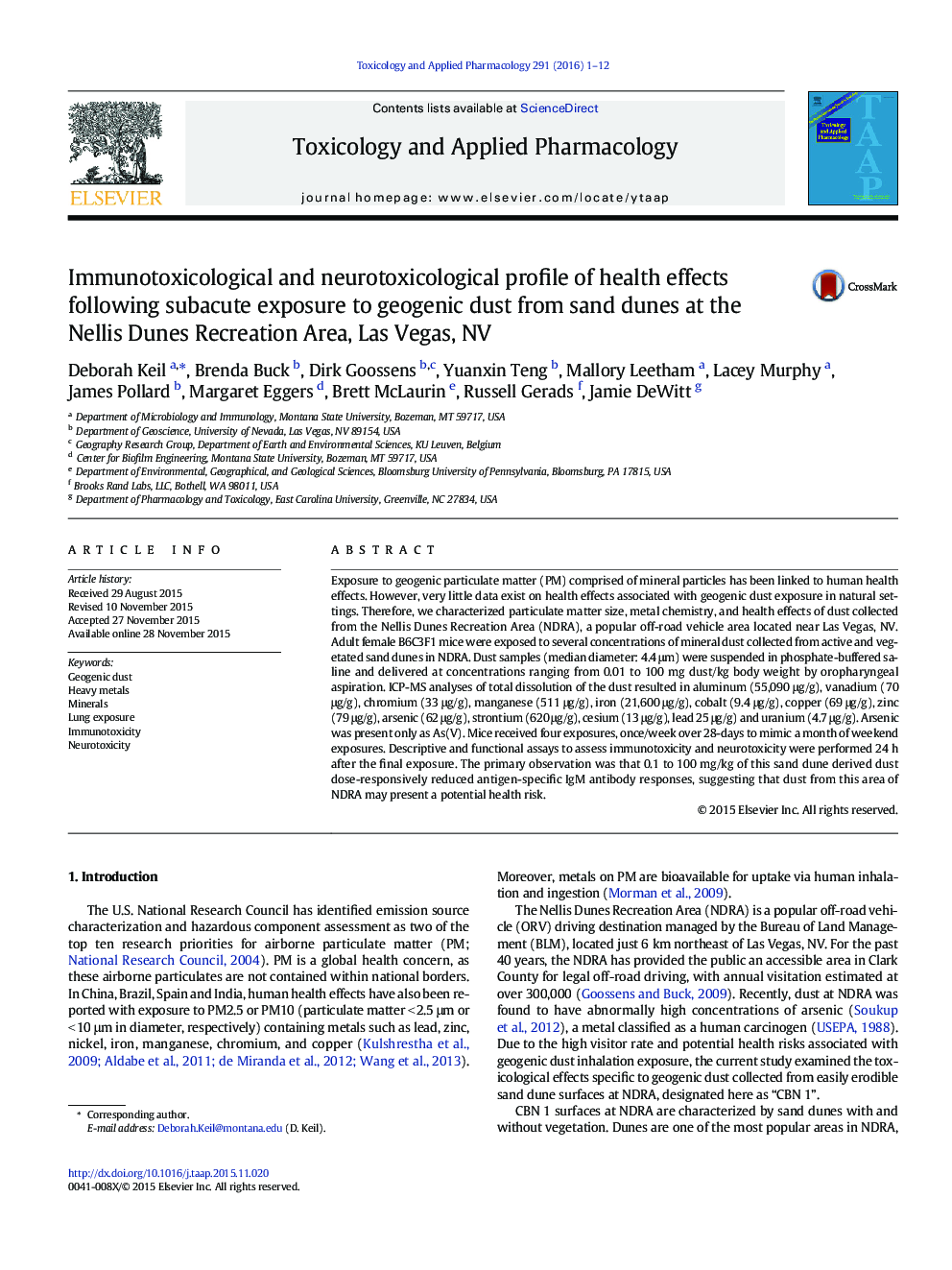| کد مقاله | کد نشریه | سال انتشار | مقاله انگلیسی | نسخه تمام متن |
|---|---|---|---|---|
| 2568197 | 1561171 | 2016 | 12 صفحه PDF | دانلود رایگان |

• Toxicological effects were characterized specific to geogenic dust exposure from a recreational sand dune site in Nevada.
• The geogenic dust is a mixture of many metals and crystalline silica.
• Exposure to geogenic dust dose-responsively decreased IgM antibody responses in a mouse model.
Exposure to geogenic particulate matter (PM) comprised of mineral particles has been linked to human health effects. However, very little data exist on health effects associated with geogenic dust exposure in natural settings. Therefore, we characterized particulate matter size, metal chemistry, and health effects of dust collected from the Nellis Dunes Recreation Area (NDRA), a popular off-road vehicle area located near Las Vegas, NV. Adult female B6C3F1 mice were exposed to several concentrations of mineral dust collected from active and vegetated sand dunes in NDRA. Dust samples (median diameter: 4.4 μm) were suspended in phosphate-buffered saline and delivered at concentrations ranging from 0.01 to 100 mg dust/kg body weight by oropharyngeal aspiration. ICP-MS analyses of total dissolution of the dust resulted in aluminum (55,090 μg/g), vanadium (70 μg/g), chromium (33 μg/g), manganese (511 μg/g), iron (21,600 μg/g), cobalt (9.4 μg/g), copper (69 μg/g), zinc (79 μg/g), arsenic (62 μg/g), strontium (620 μg/g), cesium (13 μg/g), lead 25 μg/g) and uranium (4.7 μg/g). Arsenic was present only as As(V). Mice received four exposures, once/week over 28-days to mimic a month of weekend exposures. Descriptive and functional assays to assess immunotoxicity and neurotoxicity were performed 24 h after the final exposure. The primary observation was that 0.1 to 100 mg/kg of this sand dune derived dust dose-responsively reduced antigen-specific IgM antibody responses, suggesting that dust from this area of NDRA may present a potential health risk.
During periods of heavy wind erosion, dense dust clouds of locally emitted geogenic dust enrobe the central Nellis Dune Recreation Area dunes.Figure optionsDownload high-quality image (98 K)Download as PowerPoint slide
Journal: Toxicology and Applied Pharmacology - Volume 291, 15 January 2016, Pages 1–12